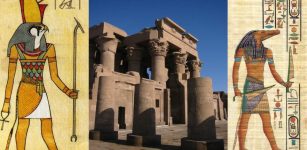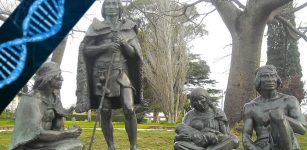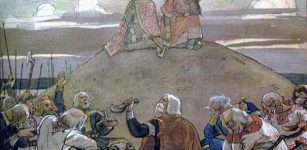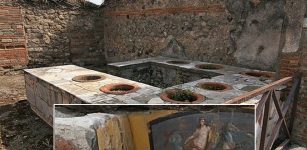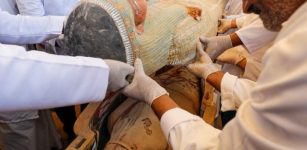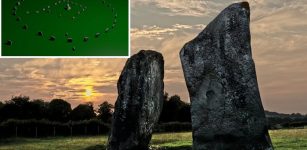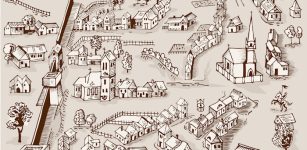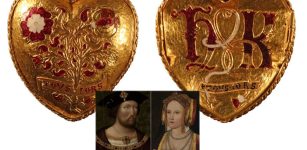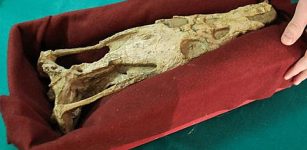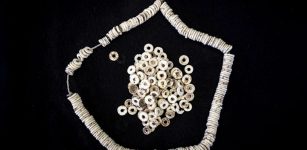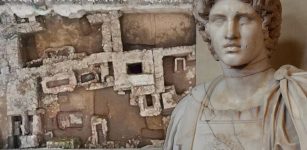Tile Tomb Dated To The Late Hellenistic Era – Discovered In Surroundings Of Istanbul, Turkey
Conny Waters - AncientPages.com - A burial monument from the late Hellenistic period, which is a first for Istanbul, has been unearthed during the excavations in the Haydarpasa Train Station in Istanbul’s Kadıköy neighborhood.
The discovery of this tile tomb, dated to Hellenistic era 3th century BC, is considered by archaeologists as important.
A burial monument from the Late Hellenistic Period, has been found in the area, which is named the north-west port of the city of Chalcedon in ancient sources. Image credit: Hurriyet Daily News
“It is an incredible find, a great surprise for Istanbul. Unfortunately, we do not have much data from the Hellenistic period. Especially in architecture and tombs, we know very little. Therefore, we are faced with a particularly important find. Istanbul’s history is being rewritten,” said archaeologist Rahmi Asal, director of the Istanbul Archaeological Museums, as cited by Hurriyet Daily News.
Many historical structures and items, dating back to the Antiquity and Republican Period, have been unearthed since the excavations started in 2018, and covered a large area of approximately 300,000 square meters.
A burial monument from the Late Hellenistic Period, has been found in the area, which is named the north-west port of the city of Chalcedon in ancient sources. Chalcedonan ancient maritime town of Bithynia, in Asia Minor. Located on a small peninsula on the north coast of the Sea of Marmara, near the mouth of the Bosphorus, the site is now a district of the city of Istanbul named Kadiköy.
Excavations at a historical Haydarpasa train station, Istanbul, Turkey. Image credit: Fotoğraf: Şebnem Coşkun - Anadolu Agency
The name 'Chalcedon' is found on all the coins of the town and is mentioned in manuscripts of Herodotus's 'Histories' and other important works of the ancients. Greek colonists from Megara in Attica founded the settlement of Chalcedon in 685 BC, approximately, seventeen years before Byzantium.
“From the beginning of the work, both architectural remains and other archaeological finds have been unearthed," informed Rahmi Asal.
"We already knew that we were carrying out excavation work at a very important spot. In the sources, this region is mentioned as the north-west port of Chalcedon,” Asal said, speaking about the excavations.
Excavations at a historical Haydarpasa train station, Istanbul, Turkey. Image source
Stating that when they started the excavations, there was an architectural ruin that they saw between the platforms, Asal continued:
“We defined this architectural relic as a Hellenistic remnant because of the small finds around it and its architectural features fit that time. We were not sure about its exact period. We thought that it might be a burial monument, as a similar example was found in 1987 in Kadıköy’s Altıyol area.”
“Later, as the excavations progressed, the architectural structure was revealed once the platforms had also removed. We unearthed a new find about five days ago. A tomb dating to the Late Hellenistic Period was uncovered. Since the tomb also contains finds, it provides very clear periodical data. We were able to clarify the date of the tomb thanks to the terracotta bottles, placed in it as burial gifts.”
“This is a tomb from the Late Hellenistic Period and an incredible find for Istanbul, a huge surprise. Unfortunately, we do not have much data from the Hellenistic Period. Especially since there are very few architectural remains and tombs. Therefore, this is an especially important find.”
“The history of Istanbul is being rewritten, as metro and Marmaray excavations continue. The Istanbul Archaeological Museums have been changing the history of the city for 20 years.”
Researchers had mostly completed the excavation at this ancient site, however, “work in the area still continues under a new project", Asal said.
If different spots are not to be excavated, we have completed 90 percent of the excavation, or even more in this project. We continue the excavations in two-to-three main spots. This is one of them. An archaeology park and one or two museums can be built in this area when the works are finished.”
Written by Conny Waters - AncientPages.com Staff Writer




